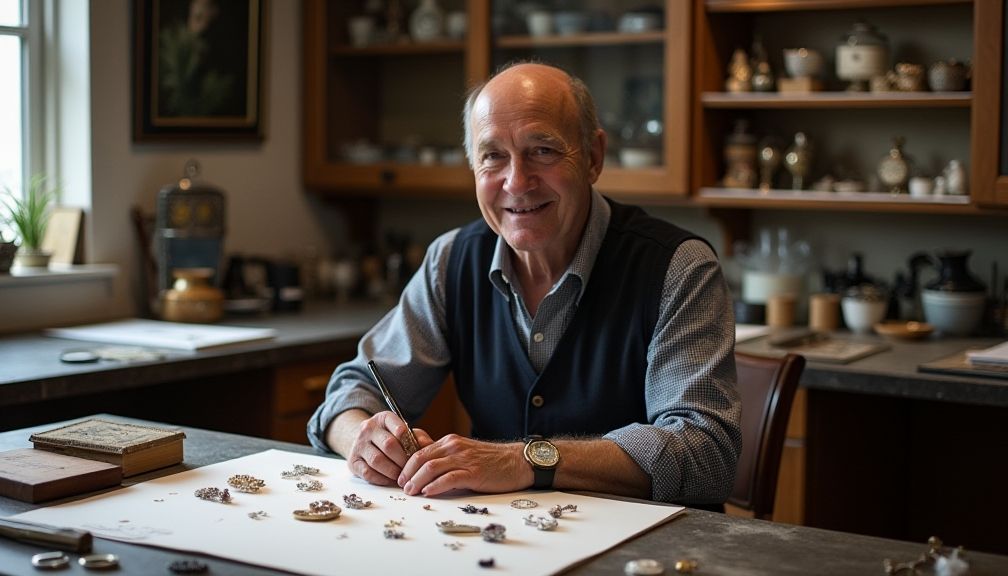Jewelry has long been a symbol of beauty, status, and artistic expression. From ancient times to the modern age, the creation of exquisite pieces has often been attributed to master jewelers whose talents transcend the ordinary. These artisans possess both an acute understanding of materials and creative genius that has birthed some of the most iconic jewelry designs known today. In this blog post, we will explore the lives and contributions of several master jewelers who have made a lasting impact on the world of jewelry design.
The Legacy of Master Jewelers
The art of jewelry making is steeped in history, dating back thousands of years. The materials have ranged from simple beads to precious metals and stones, but the desire for beauty has remained constant. Master jewelers are artisans who have honed their skills through years of practice and dedication. They often draw inspiration from various sources, including nature, architecture, and cultural heritage, ensuring that each piece tells a story.
![]()
Notable Master Jewelers and Their Iconic Designs
1. Peter Carl Fabergé
One of the most renowned jewelers in history, Peter Carl Fabergé is famous for his extravagant Fabergé Eggs. Commissioned by Russian Tsars, these jeweled eggs are celebrated for their intricate designs and innovative use of gemstones. Each egg contains a surprise, further enhancing its allure. Fabergé’s work is characterized by its impeccable craftsmanship and unique combination of materials, making him a luminary in the jewelry world.
2. Designing the Future: Louis Comfort Tiffany
Louis Comfort Tiffany, the son of the founder of Tiffany & Co., was a pioneer in the world of jewelry design and glass art. He is best known for his innovative use of colored glass in jewelry, particularly his signature style that incorporates natural motifs. Tiffany’s designs often feature floral patterns and organic curves, showcasing his appreciation for nature’s beauty. His pioneering techniques paved the way for modern art jewelry.
3. Cartier: The Timeless Luxury
Founded in 1847, Cartier has become synonymous with luxury and elegance. The brand’s master jewelers have crafted some of the most iconic pieces in history, including the famous Love Bracelet and the Panthère de Cartier collection. Cartier’s expertise in combining different materials and creating statement pieces has earned the brand a prestigious place in the jewelry industry. The philosophy of ‘jewelry as art’ resonates in every piece they produce.
4. Boucheron: A Family Legacy
Boucheron, established in 1858, is known for its artistic approach to jewelry making. Frédéric Boucheron, the founder, was the first to set up shop in the Place Vendôme in Paris. He became famous for his innovative designs, often drawing inspiration from nature and historical motifs. His legacy continues today as Boucheron’s master jewelers push the boundaries of creativity and craftsmanship.
5. Van Cleef & Arpels: The Alchemy of Jewelry
Founded in 1906, Van Cleef & Arpels is celebrated for its innovative and whimsical designs. The brand is known for its signature technique, the Mystery Setting, which allows gemstones to be set without visible prongs, resulting in a seamless finish. Their iconic pieces, such as the Alhambra collection, are revered for their elegance and intricate craftsmanship. The ethos of Van Cleef & Arpels lies in the belief that jewelry should tell a story and evoke emotion.
The Techniques Behind Iconic Designs
What sets master jewelers apart is not only their artistic vision but also their technical prowess. The creation of iconic pieces often involves a combination of traditional techniques and modern innovations.
1. The Art of Setting Stones
Setting gemstones is one of the most critical aspects of jewelry design. Jewelers must understand various techniques, such as prong setting, bezel setting, and pavé setting, to securely hold stones while enhancing their beauty. Each method requires precision and skill, as the way stones are set can significantly affect the overall appearance and brilliance of the piece.
2. Metalworking Mastery
Jewelry is often a fusion of metals and gemstones, making metalworking an essential skill for jewelers. Techniques such as casting, forging, and soldering are crucial in shaping materials into intricate designs. Master jewelers often personalize their pieces with unique metal textures and finishes, adding to the distinctiveness of their work.
3. Innovative Technology
In recent years, technology has revolutionized jewelry design. Computer-aided design (CAD) allows jewelers to create precise 3D models of their creations, streamlining the design process. Moreover, advancements in laser cutting and engraving have enabled intricate detailing that would be challenging to achieve by hand. These tools empower master jewelers to push their creative boundaries further than ever before.
The Influence of Culture and History
The designs of master jewelers are often reflective of their cultural and historical contexts. Jewelry signifies more than mere adornment; it embodies social status, beliefs, and artistic traditions.
Further Reading:
1. Cultural Inspirations
Many master jewelers draw inspiration from their cultural heritage. For instance, Indian jewelers are known for their elaborate gold work and intricate designs, often using traditional motifs. Similarly, African artisans create jewelry that showcases their cultural narratives, often using locally sourced materials. Understanding the rich tapestry of cultural influences can deepen the appreciation for jewelry as an art form.
2. Historical Contexts
Historical events, such as wars and social movements, have shaped jewelry design and trends. For example, the Art Deco movement, influenced by the Roaring Twenties and the rise of jazz culture, brought forth geometric shapes and bold colors in jewelry. Conversely, the Victorian era emphasized romance and sentimental pieces. Recognizing these historical contexts can enhance one’s understanding of the evolution of jewelry design.
The Role of Sustainability in Modern Jewelry Design
As awareness of environmental issues grows, many master jewelers are embracing sustainable practices. This shift not only reflects a commitment to ethical craftsmanship but also responds to consumer demand for responsible luxury.
1. Ethical Sourcing of Materials
Modern jewelers are increasingly prioritizing ethically sourced gemstones and metals. Many are turning to lab-grown alternatives that offer the same beauty without the environmental impact associated with mining. Additionally, brands are transparent about their supply chains, ensuring consumers are aware of where materials are sourced.
2. Craftsmanship That Lasts
Master jewelers focus on creating timeless pieces that can be cherished for generations, rather than disposable fashion jewelry. The emphasis on durability and quality ensures that each piece holds its value and significance over time, contributing to a more sustainable approach to jewelry.
![]()
The Future of Jewelry Design
As we look to the future, the world of jewelry design continues to evolve. The next generation of master jewelers is emerging, bringing new perspectives and innovative ideas to the craft.
1. A Blend of Tradition and Innovation
The future of jewelry design will likely see a blend of traditional techniques with modern technology. Young jewelers are experimenting with unconventional materials and styles while paying homage to classic methods. This fusion creates a dynamic and vibrant landscape for jewelry enthusiasts.
2. Embracing Diversity
Diversity is becoming an essential aspect of the jewelry industry. More voices are being heard, and a wider range of cultural influences is shaping designs. As the jewelry market becomes more inclusive, we can expect to see a rich variety of styles that reflect the global landscape.
Conclusion
The world of jewelry is a captivating realm where art, craftsmanship, and history intersect. Master jewelers have played a pivotal role in shaping the iconic designs that have adorned us throughout the ages. From the intricate work of Fabergé to the modern innovation of Van Cleef & Arpels, these artisans continue to inspire and influence. As we honor their legacies, we also celebrate the future of jewelry design—one that embraces sustainability, diversity, and innovation. Whether you wear these masterpieces or admire them from afar, the stories behind them remind us of the beauty that skilled hands can create.








